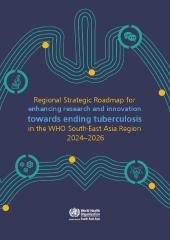Globally, tuberculosis (TB) remains one of the leading causes of morbidity and mortality. It was the second largest killer among infectious diseases in 2022. Despite being a curable and preventable disease, TB extracts an enormous human and societal toll. All Member States have committed to end TB by 2030, as part of the United Nations Sustainable Development Goals (UNSDGs). The corresponding End TB targets are 80% reduction in TB incidence rate and 90% reduction in the number of TB deaths, relative to 2015 and elimination of catastrophic costs due to the disease for affected families.
Ending TB requires a comprehensive strategy integrating medical, public health and social interventions, focused on the prevention, early diagnosis and treatment of TB, while ensuring patient support during the process. WHO has formulated and keeps updating guidelines on various interventions required to implement the End TB Strategy, including those for medical approaches and for reduction of the TB burden, based on the available scientific evidence. Several stakeholders are playing a pivotal role in implementing these guidelines and ensuring equitable access to prevention, diagnosis and treatment services for those affected by TB. Despite significant efforts, global progress towards ending TB has been slow due to insufficient resources, suboptimal tools, inadequate access to the services, lack of multisectoral action and inadequate attention to the socioeconomic determinants of TB. Globally, an estimated US$ 22 billion per year is needed to finance the TB response. As of 2022, only US$ 5.8 billion was available, with US$ 1.1 billion of this coming from international donor funding. Progress received a further setback due to disruptions in TB services during the COVID-19 pandemic. At the current rate of progress, the target of reducing the global burden by 2030 as envisioned in the SDGs is unlikely to be met.
